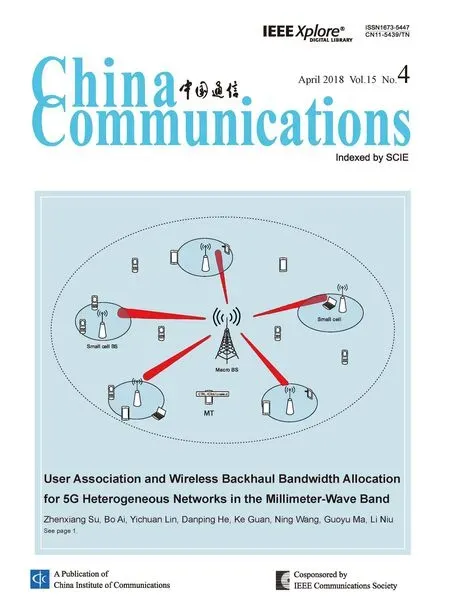Context-Oriented Multi-RAT User Association and Resource Allocation with Triple Decision in 5G Heterogeneous Networks
Jing Li, Xing Zhang*, Shuo Wang, Wenbo Wang
Wireless Signal Processing and Network Laboratory, Beijing University of Posts and Telecommunications, Beijing 100876, China
I. INTRODUCTION
TREMENDOUS mobile data traffic has overwhelmed the emerging fifth generation (5G)heterogeneous networks. It poses more stringent requirement on network capacity, latency,etc. to cope with this explosive traffic demand[1]. Thus various promising technologies, such as massive MIMO, mmWave and mobile edge computing, spring up in 5G system [2]. Besides, it’s a key and efficient solution to take advantage of coexisting multiple radio access technologies (RATs) in such a heterogeneous scenario, such as LTE, WiMAX and WiFi. It brings multiplexing gain in RAT domain by parallel transmission across multiple RATs[3]. Highly matured electronic industry equips smart devices with multi-RAT interfaces.Furthermore, the architecture of cloud radio access network (CRAN) supports cooperation among multiple RATs [4].
To optimally leverage such heterogeneity,problems of user association and resource allocation (UARA) are essential and should be jointly determined. Intelligent joint UARA strategies could significantly improve the network throughput and quality of service (QoS)[5,6]. A basic aspect of network intelligence is self-adaption to users’ and networks’ context.On the user side, new kinds of services emerge endlessly and QoS requirements diverse largely. While networks with different RATs are characterized by different attributes like coverage, QoS and available frequency bandwidth. So there should be a match between QoS requirements diversity and RATs’ difference. On the network side, an optimal UARA strategy should be aware of network load and interference. It should not chase single benefit at a cost of heavy congestion and large interference. Negligence of any side will turn down system performance. For example, with fixed resource allocation, the maximum signal-tonoise-ratio (max-SNR) association commonly used today ignores network load. Consequently, users may confront bad transmission rate and ping-pang effect [7]. With awareness of network context, users may access to farther access point (AP) and enhance their data rate.Extra handover cost will be saved as well. In always best connection (ABC) mostly studied[8,9], each user tends to connect to all available RATs to maximize its own utility. This is not always optimal from an overall system perspective. First, users interact with each other for resource competition. Second, users may be unevenly served and the system loses adaptiveness to different QoS requirements.
In the literature, a majority of scholars considered UARA separately. For multi-RAT association, [3] studied access mode control to maximize the network throughput. It considered two access modes of single RAT access and simultaneous multi-RAT access. Given interference and congestion of the network,the optimal mode selection probability was derived under maximum signal-to-interference-plus-noise-ratio (max-SINR) access scheme. However, it doesn’t give the exact access strategy but only in a probabilistic perspective. Moreover, as users’ needs vary, the lack of user context may degrade users’ quality of experience. In order to improve mobility robustness, users were allowed to connect to a set of APs under CRAN architecture [10].This set of APs was adaptively adjusted by only comparing the user’s data rate with a predefined threshold. Most other works focus on signal RAT selection [11-13], where the RAT optimizing the utility function was selected.For resource allocation, by assuming parallel transmission across all available RATs, [14]proposed an energy efficient power and bandwidth allocation strategy. To adapt to each user’s QoS requirements and battery capability,the resource allocation problem was modeled as multi-objective optimization. [15] proposed to aggregate user traffic through multiple available links for load balancing. Optimal bandwidth assignment was determined by maximizing a capacity based utility function.[16] further incorporated the backhaul delay into bandwidth allocation. While this work was designed for data service.
To intelligently determine how to use these multi-RAT access resources concurrently,this paper proposes a joint multi-RAT user association and resource allocation strategy with triple decision and integrated context awareness of users and networks.
[17] proposed a joint UARA algorithm for file transfer service. It activated the best RATs set and determined the right amount of file segments to be transferred across the corresponding RAT. While the cost function used in this work ignores the expense of user competition. Under multi-user interactions, it might not be optimal. [18] proposed a multimode access scheme with joint resource scheduling. A network congestion threshold was used to determine user association. After the association strategy was made, resources of frequency spectrum and time slots were optimally assigned for proportional fairness.In essence, it solved the problems of UARA separately but not jointly. [19] mainly focused on bandwidth and power allocation when each user was allowed to transmit over multiple and simultaneous RATs. The optimal set of RATs was selected for each user while the problem of AP selection was not considered. [20]studied joint AP selection and resource allocation by game theory. A utility function was designed to satisfy existence and efficiency of equilibria. System throughput was maximized by proper interference management. While this work only considered one single RAT.Other similar works were presented in [21-24]. For various objectives of load balancing,interference mitigation and QoS awareness,they studied joint UARA in multi-tier cellular networks with only one single RAT. While the multiplexing gain of multi-RAT parallel transmission was not explored.
In conclusion, in the heterogeneous environment of multiple RATs coexisting, how to utilize these access resources in a concurrent way remains to be comprehensively studied.First, most works only set look on single aspect of UARA. Second, joint UARA is mostly investigated in a single RAT scenario. The problem of parallel transmission over multiple RATs isn’t given much attention. Third, the previous works lack integrated context awareness of networks and users. All of the three points block achieving maximal RAT multiplexing gain.
This work proposes a joint multi-RAT UARA strategy with integrated context awareness of networks and users. Assignment of three kinds of access resources, RATs, APs and radio channels, is optimally determined by an improved ant colony algorithm (ACA). We call it triple decision. Our main contributions include:
· First, multi-RAT UARA with fixed channel allocation is investigated. This is a problem of multi-RAT user association. A system utility function is modeled to capture adaptiveness to user context (different QoS requirements) and network context (network load and interference). By maximizing the system utility, the optimal RATs combination and AP of each occupied RAT are determined for each user with ACA.
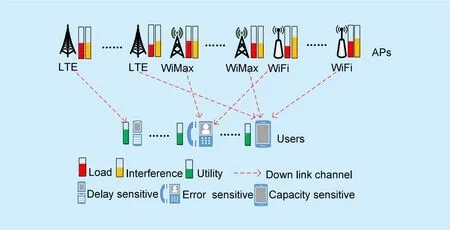
Fig. 1. System overview.
· Second, optimization of channel allocation is further incorporated. The optimal set of RATs, the AP of each occupied RAT and the amount of channels are jointly assigned for each user by simultaneously maximizing system utility and resource allocation fairness. Based on the idea of dynamic game theory, an improved ACA is designed to solve this joint optimization problem.
· Third, performance is compared with other two UARA strategies based on max-SNR and ABC by simulation. It is shown that the proposed strategy achieves the maximal RAT multiplexing gain in terms of system utility. And it is wiser to make multi-RAT association decision from a system-wide viewpoint than from an individual one.
The rest of this paper is organized as follows. Section II shows the system model. The joint multi-RAT UARA problem is modeled and solved in section III. Further, simulation results and corresponding analyses are given in section IV. Finally, the whole work is summarized in section V.
II. SYSTEM MODEL
Figure 1 shows the system overview. Consider a downlink heterogeneous network with three kinds of RATs available: LTE, WiMAX (IEEE 802.16) and WiFi (IEEE 802.11). Users can occupy multiple RATs, and for each RAT they can access to one AP at most.
For notational simplicity, RAT of LTE is indexed by 1, WiMAX by 2 and WiFi by 3.The set ofKmAPs with RATm∈{1,2,3} isThe auxiliary APm0models the situation that the user doesn’t use RATm. Locations of APs with RATmare modeled as an independent homogeneous spatial Poisson point process (SPPP) of densityλm. APs of the same RAT are con figured identically, e.g. the total bandwidth, transmit power, maximum number of accommodated users.The characteristic of APmiis indicated by an attribute vectorwhereWmis the total bandwidth,Nmiis the load at APmimodeled by the number of asso-ciated users,Mmis the maximum number of accommodated users,emiis the average packet error rate (PER) anddmiis the average service delay. The network context considered in this paper includes network load and interference,which are indicated by scheduling probabilitypand interfering probabilityθmodeled in section III, respectively.
Assume that the service system at APmiis an M/M/1 queuing system. According to the Little’s law [25], we havewhereμmiis the service rate at APmiandξis the user arrival rate.
Users are denoted byTheir locations are randomly drawn from a SPPP of densityλu.The context of a user considered in this paper consists of QoS requirements and user location. Thus the context vector of useruiswhereCu,DuandEuare QoS requirements of capacity, delay and PER, respectively, andluis the location of useru.
The total frequency bandwidthWmis divided intoRmorthogonal channels, and each channel owns ?mbandwidth. The number of channels allocated to useruat APmiisbu,mi.
The set of APs with RATmavailable for useruat locationluis modeled aswhere Γu,?u,mis the SNR between user and AP?u,m, and Γthis the minimum SNR threshold.
As LTE, WiMAX and WiFi are orthogonal frequency division multiple access (OFDMA)based RATs and they work at different radio frequency bands, there is no inter-RAT interference. Users occupying the same RAT and the same frequency band interfere with each other.
III. PROPOSED CONTEXT-ORIENTED JOINT MULTI-RAT UARA STRATEGY
In this section, we first propose a context-oriented multi-RAT UARA strategy with fixed resource allocation. This is a user association problem. Access resources of RAT and AP are assigned by ACA. Then channel allocation is incorporated. This joint optimization problem is modeled with considerations of both system utility and resource allocation fairness. A dynamic game based ACA is designed to solve it. The proposed strategy is called JCMAA for short.
3.1 Context-oriented multi-rat user association with fi xed resource allocation (CMAA)
In this section, two kinds of access resources, RATs and APs, are assigned to users with adaptiveness to context of users and networks.ACA is utilized to solve the system utility maximizing problem.
1) Problem Formulation
Given the fairness of resource usage and guarantee of data rate, the amount of channels occupied by each user at LTE APs and WiMAX APs is fixed byrespectively. As users have equal channel access probabilities at WiFi APs, the channels are averagely shared by all associated users, namely
The multi-RAT association strategy space of useruisLet aube an element ofAu, and au(m) denote them-th dimension of au, which indicates useru’s AP selection of RATm. An association strategy pro file for all users can be written as
Under association strategy profile a, the performance metrics of useruachieved frominclude capacitycu,amu(), delayThey are computed with the attribute vector gau(m).
Based on the Shannon theory,given by

whereis the SINR between useruand AP au(m).
The signal received by useruat distanceaway from AP au(m) is assumed to experience path loss with exponentα. It is mixed with random Gaussian noise with varianceσ2and interferenceIau(m). Given the transmit powerPau(m)of AP au(m) and the channel power gainis formulated as
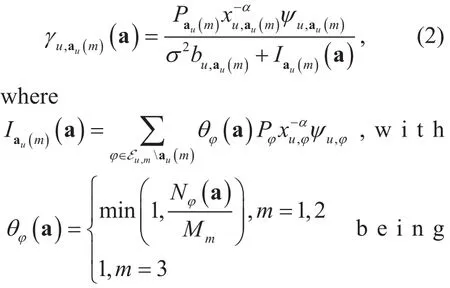
the interfering probability of AP?. Assume that the set of users associated withAs the load of an AP is affected by all users’ strategies,N?is written as a function of a,1(?) is an indicator function.
Delayare directly given inand
The scheduling probability at AP au(m) can be formulated as
In order to incorporate the integrated context information: a) QoS requirements; b)network load and interference caused by user interactions (or competition), we model the utility of useruachieved from AP au(m) as
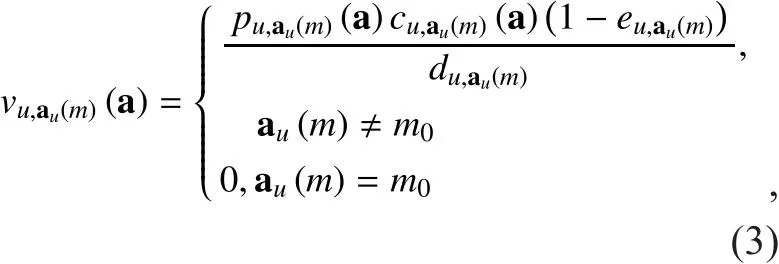
which indicates the capacity attenuated by service delay. Then the individual utility of useruunder strategy pro file a is

The system utility is defined as the sum of all users’ individual utility:In order to view the problem from a system-wide perspective, the objective function is formulated to maximize system utility with QoS requirements constraints:
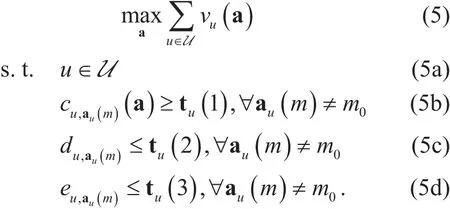
The solutionyields the optimal multi-RAT association strategy pro file.
2) Multi-RAT User Association Decision Making
Solving the optimization problem in (5) is a decision making process. ACA is used to search for the optimal decision pro file a*.
In order to shrink the searching space of ACA,the set of available APs with RATmfor useruis redefined asas delay and PER are irrelative to association strategy profile a. The searching space of
De fi ne an indicator vector iufor useruto capture capacity requirement constraint,withing given in (3).
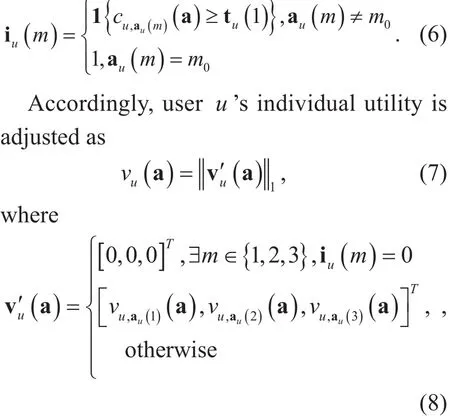
Figure 2 constructs the searching map for ACA. TakeUusers asUdifferent layers ordered in cycle. The strategy set of each user is deployed on the corresponding layer and each element in the strategy set as a node. For each node there exist one-way paths leading to all nodes on the next layer. Algorithm 1 describes how the optimization problem in (5) is solved by ACA. Definition of parameters used in Algorithm 1 is given in table 1.
An ant is indexed byk∈{1,...,n}. Antktravels on the searching map along feasible paths till it has passed through all layers (lines 5-9). The sequentially visited nodes construct its route pk, which is equivalent to an association strategy pro file a. Consequently the system utility can be mapped to the route utilityLkthat antkachieves after its trip,

Thus the goal of all ants is to find the route with maximal route utility.
In iterationt, antkstarts from an initial node aurandomly drawn from searching spaceA(line 3). Then it selects a node au+1on the next layer as its one-step destination based on the rule below

withbeing the heuristic function given in (12) andbeing the pheromone on path (au, au+1),

The heuristic function defined in (12)makes the ant tend to select the node maximizing its route utility, which is consistent with the objective in (5). After antkterminates its trip, its route utility is computed (line 10).
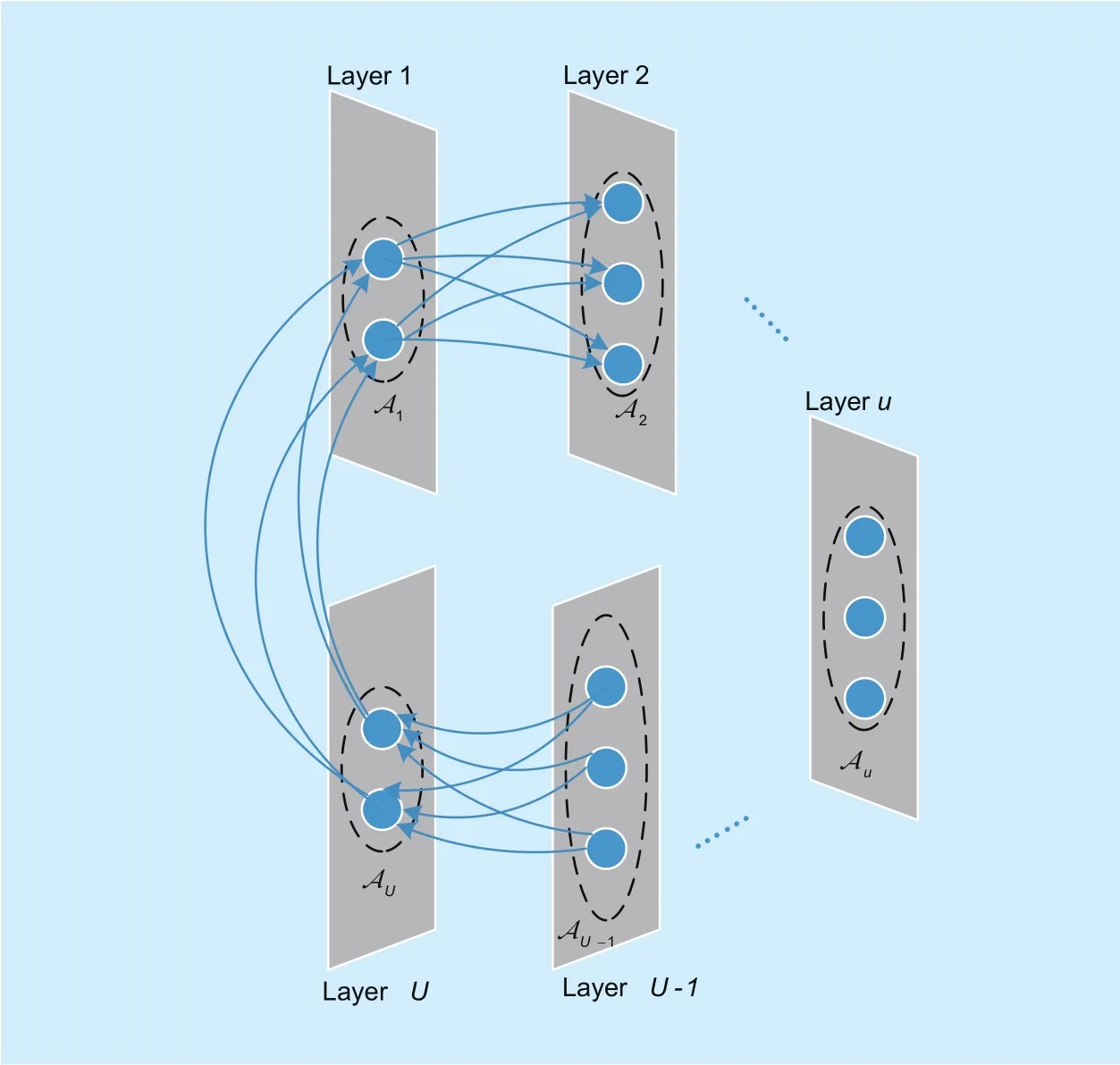
Fig. 2. Structure of searching map for ACA.

Table I. Parameters used in algorithm 1.
After all ants finish their trips in iterationt,antk*with the largest route utility is picked out (line 12). Meanwhile the route that antk*passed by and the corresponding route utility are saved (lines 13-14). The pheromone on all paths is updated based on the rule below (line 15)


?
When the iteration is terminated (line 17),find the iterationt*with the largest route utility (line 18). The final outputsandare the optimal multi-RAT user association strategy pro file and the maximal system utility, respectively.
3.2 Joint multi-RAT user association and resource allocation
In this section, we jointly consider optimization of user association and resource allocation. With integrated context awareness, the optimal number of channels is further allocated to each user. A dynamic game based ACA is designed to simultaneously maximize system utility and resource allocation fairness.
1) Problem Formulation
Channel allocation strategy set of user u is denoted by
Letbe an element ofBuand bu(m) be them-th dimensionit is the amount of channels allocated to useruat AP au(m). Thus a joint UARA strategy of user can be written aswheredenotes the joint UARA strategy under RATm. Further, a joint UARA strategy profile for all users can be written as
In order to mute interference and alleviate congestion, some users may not be provided with any channel. So the scheduling probability and the interfering probability cannot be calculated with the number of accommodated users here. Some modification should be considered. The utility modeled in (4) is modified as
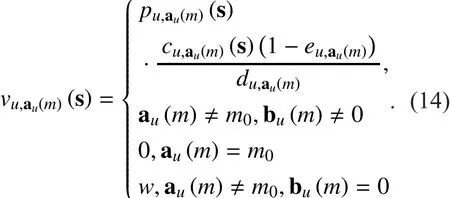
When a user is associated with an AP but not provided with any channel, it is put in a queue and waits for being scheduled. So the current scheduling probabilityat AP au(m) is determined by the number of users who occupy channels. So we have

Similarly, the interfering probability is affected by the number of occupied channels,as it may cause co-channel interference when a channel is occupied at an AP. So we have
While the scheduling probabilitydoesn’t have significant effect on load balancing. This is because the whole system has stronger will to mute interference. It tends to associate users with the same AP but not allocate channels to them. To avoid this situation, we add a penalty factorwinto the utility function in (14).
Under joint UARA strategy profile s, the individual utility isthe system utility is
While only to maximize the system utilityVis not enough, because it may cause rather unfair channel allocation to users. The heuristic function defined in (12) makes the ant choose the next node based on the former nodes it has passed by. This makes the user tend to occupy more channels, if the ant selects strategy for it before others.
Thus considering fair channel allocation, a fairness factor,

is designed and added into the objective function. The closeris to 1, the larger fairness is.ζis an important parameter.It balances system utility and resource allocation fairness.
The joint optimization problem is modeled as

Constraint (16c) implies that when userudoesn’t access to any AP with RATm, it shouldn’t occupy any channels of RATm.(16d) guarantees no interference among users at the same AP. And (16e)-(16g) are QoS requirements constraints.
2) Joint Multi-RAT UARA Decision Making
Traditional ACA no longer applies to solving problem (16). Users of the earlier visited layers can get channels, while those of the later visited layers may not have enough channels to use. Although the objective function takes fairness into account, it largely lowers scheduling probability and unbalances network load to make joint UARA decision in such a sequential way.
In dynamic game theory, each player adjusts its strategy in order based on the strategy profile of other players [26]. Taking advantage of this idea, a dynamic game based ACA (GACA) is designed. The description of GACA is given in Algorithm 2.
We make each ant search for multiple rounds (lines 5-13). An initial strategy pro file is generated after the first round travel. In later rounds, the ant sequentially adjusts the node on each layer that it selected in the last round.Thus the heuristic function in (12) is redefined as (17) shown in the bottom at this page.where s?is the strategy pro file of users exceptare given in (19)(20). The ant terminates its trip till it no longer changes its route or the number of rounds that lasts for exceeds a threshold (line 13). This is equivalent to the process of a dynamic game.The difference is that the ant substitutes players in game to make decisions. And ants can guide each other to select better paths (strategies) in their multi-round trips by pheromone.
The joint UARA strategy set of userStrategies′ not satisfying (16c) are filtered out fromSu. Thus the searching space for GACA is

We set the system utility to ?∞ instead ofVif s violates constraint (16d).

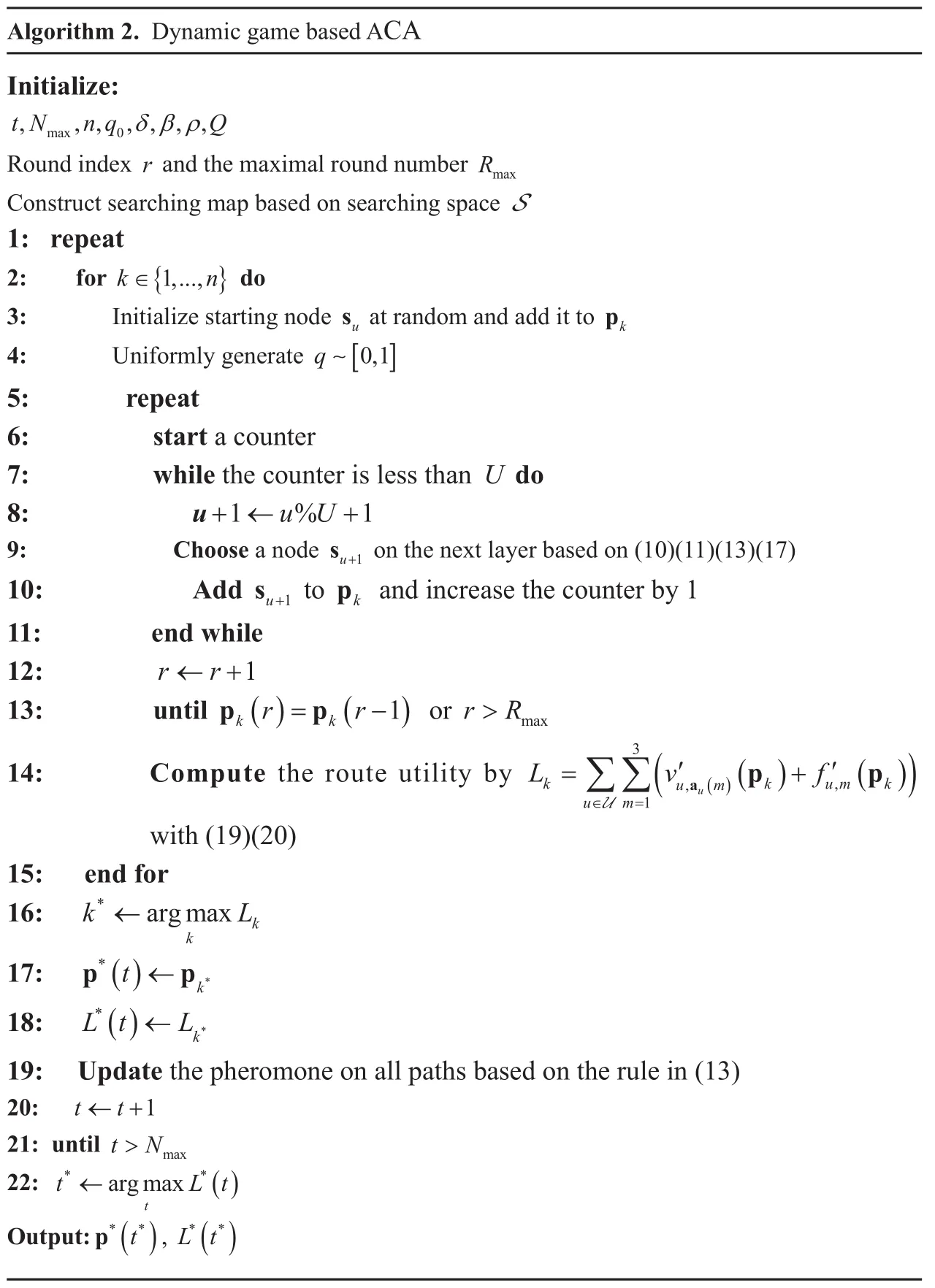
?
To make GACA capture constraint (16e),the indicator vector defined in (6) is modified as respectively.
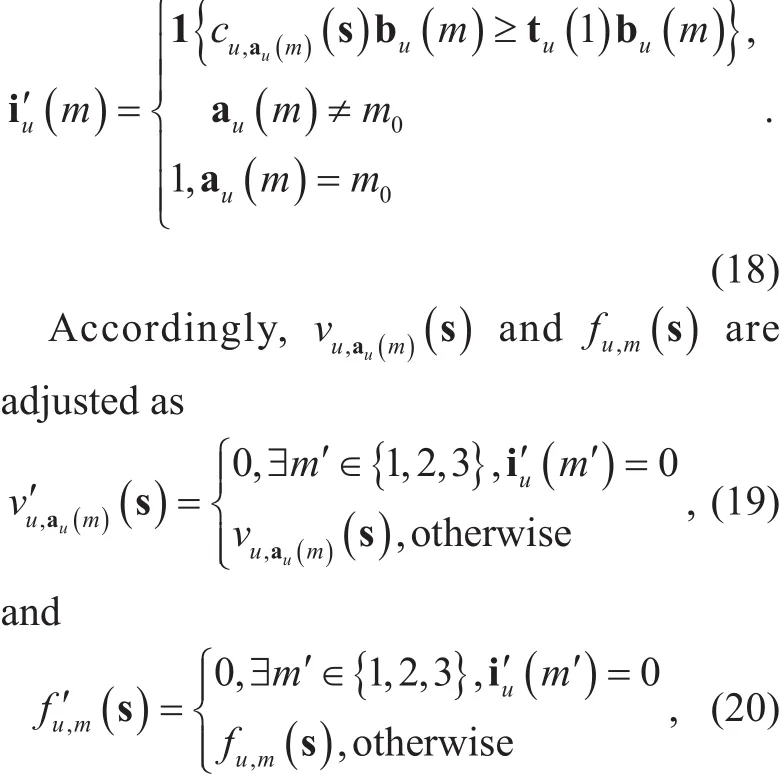
ζcan be given different values in each round. The route adjustment is controlled byζ, for differentζmakes the ant have different tendency to system utility and resource allocation fairness.
IV. SIMULATION RESULTS
Simulation parameters are given in table 2.Consider a round service area with radius of 1000m. Locations of APs are drawn from independent homogeneous SPPPs of densities given in table 2. Three kinds of popular services, together with their typical QoS requirements [12,27] are shown in table 3. Users request one of these services at random.
The max-SNR based and ABC based multi-RAT user association strategies with fixed resource allocation are considered for comparison, which are most commonly used and studied recently. With max-SNR association (max-SNR for short), users occupy all available RATs and access to the AP of each occupied RAT that provides maximum SNR. In ABC association (ABC for short), users choose the strategy maximizing their individual utilities.
Under different combinations of parametersδandβ, figure 3 compares the convergence performance for CMAA and JCMAA. In figure 3(a), it shows good and quick convergence under each pair ofδandβ. When the ant colony only relies on heuristic function, namelyδ=0 andβ=1, to solve the optimization problem in (5), it achieves the best solution.Thus we setδ=0 andβ=1 for CMAA in the following simulations. And in figure 3(b),it also shows the best convergence withδ=0 andβ=1. So we setδ=0 andβ=1 for JCMAA as well.
Figure 4 gives the system utility of JCMAA as a function ofRmaxunder different user densities. The system utility increases with the increasing ofRmax, which implies that multiround searching of GACA can improve system utility. For smaller user density of 10?6,2 ? 10?6and 3? 10?6, the system utility goes steady whenRmax≥2. While for larger user density of 5 ? 10?6, the system utility keeps increasing whenRmax≥2. This indicates that the larger the user density is, the more rounds the ants have to travel to maximize system utility. Figure 4 also proves the effectiveness of the designed algorithm GACA. We setRmax=4 in other simulations unless otherwise speci fi ed.
Figure 5 shows the impact of parameterζin (15) on system utility of JCMAA under different user densities. In this simulation,we setRmax=2.ζbalances the system utility and the resource allocation fairness when solving the joint optimization problem in (16).The smallerζis, the more attention is paid on resource allocation fairness, otherwise on system utility. Figure 5 shows that under user density of 10?6, 2 ? 10?6, 3? 10?6and 4 ? 10?6, the maximal system utility is achieved withζ=5? 10?2,ζ=5? 10?2,ζ=10?2andζ=5? 10?3, respectively. This indicates that the larger the user density is, the more attention should be paid on resource allocation fairness when searching for the optimal joint UARA strategy.
The situation that a user occupies all available RATs is defined as greedy association.

Table II. Simulation parameters.

Table III. Typical QoS requirements.
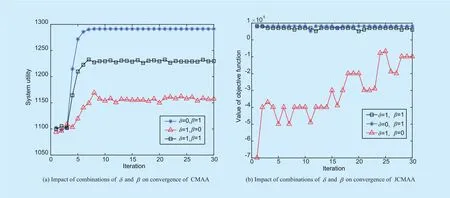
Fig. 3. Impact of combinations of δ and β on convergence of CMAA and JCMAA.
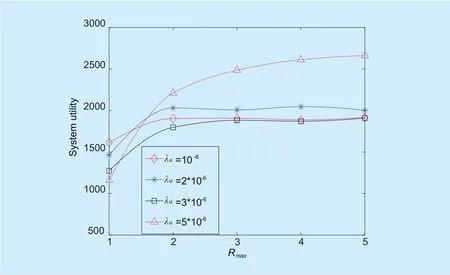
Fig. 4. System utility of JCMAA as a function of maximal round number Rmax for varying user density λu.
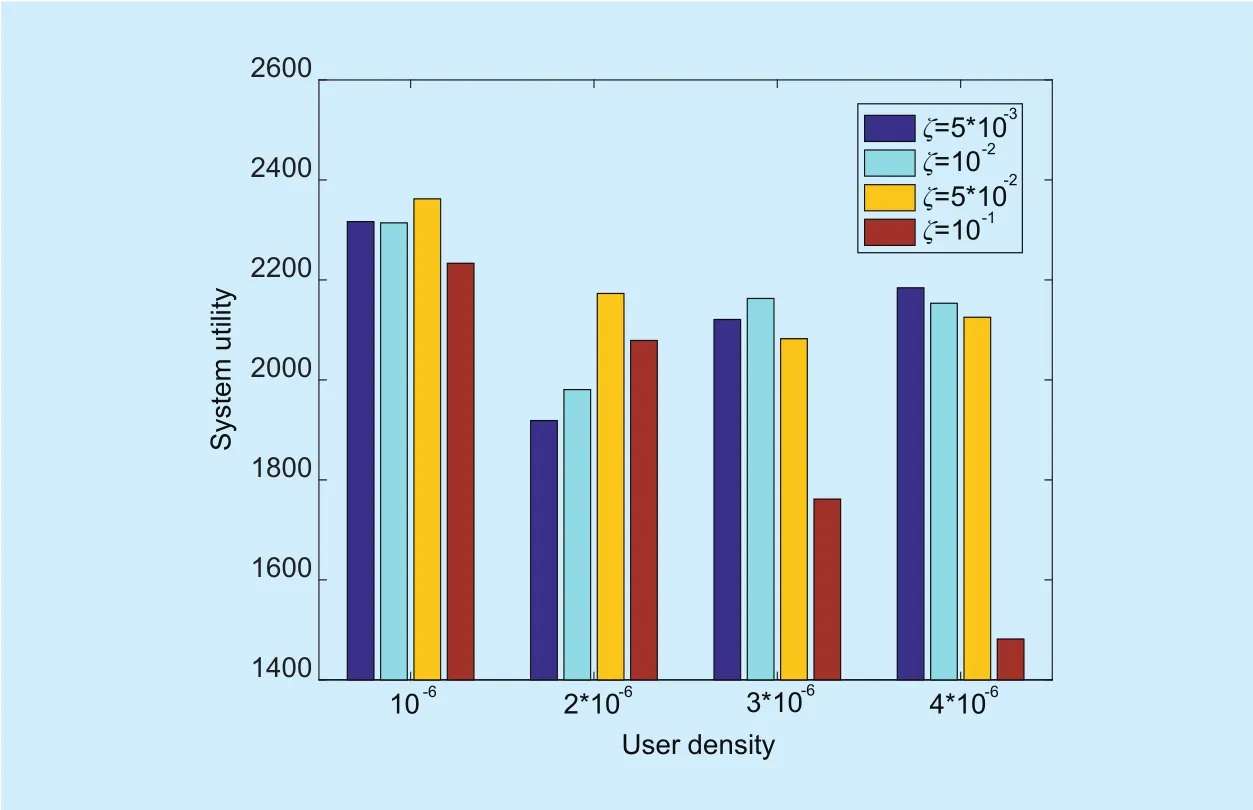
Fig. 5. Impact of parameter ζ on system utility of JCMAA for different user densities.
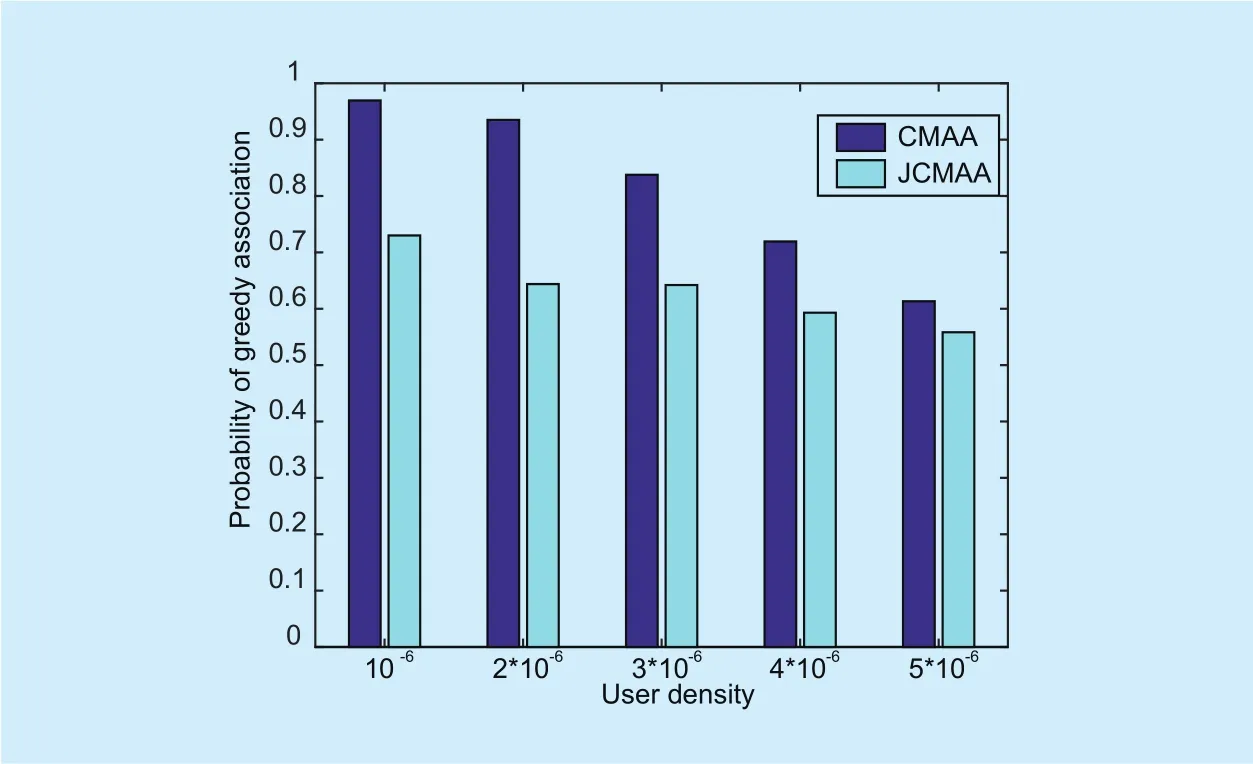
Fig. 6. Comparison of greedy association probability for different UARA strategies.
Figure 6 shows the impact of user density on the probability of greedy association (PGC).With user density increasing, PGC goes in the opposite trend both for CMAA and JCMAA.This indicates that part of users cede part of their available RATs to alleviate network congestion and interference. And PGC of JCMAA is much smaller than that of CMAA. This indicates that resource allocation and user association interact with each other. These two problems are tightly coupled.
Figure 7 compares the average scheduling probability per AP (ASPA) achieved by different strategies. When user density increases,all of the four strategies show a decrease in ASPA. This is because the number of users increases to exceed the whole system’s serving ability and the network is congested. However CMAA and JCMAA yield much higher ASPA.This is because in CMAA and JCMAA, users tend to associate with part of the available RATs as user density goes larger, thus each AP is less loaded. While in max-SNR, users ignore network context and tend to associate with the nearest AP of each available RAT,which causes heavy congestion. In ABC, although users are aware of network context,they aim at maximizing their individual utilities and hence tent to associate with the lightest loaded AP of all available RATs. Further,JCMAA achieves higher ASPA than CMAA,which implies the signi fi cance of joint UARA optimization.
Figure 8 compares the average interfering probability per AP of different UARA strategies. CMAA achieves the minimum interference since users tend to be anti-greedy as opposite to max-SNR and ABC. While JCMAA maximizes both system utility and resource allocation fairness, so it has the fewest residual channels. This makes JCMAA cause large interference. While when user density continues to grow, JCMAA adjusts resource allocation strategy to reduce interference and guarantee system utility against decreasing.
Figure 9 compares the system utility achieved by different UARA strategies. JCMAA averagely yields 20%, 39% and 70%performance gain compared to CMAA, ABC and max-SNR, respectively. And CMAA averagely yields 16% and 43% performance gain compared to ABC and max-SNR, respectively.When user density reaches 4 ? 10?6, the system utilities of ABC and Max-SNR go from increasing to decreasing. This implies that their selfishness and context ignorance sharply lower their system utilities as user density grows large enough. While JCMAA and CMAA encourage users to compromise, thus their system utilities keep steadily increasing. It’s noteworthy that the proposed joint UARA strategy,JCMAA, achieves the largest RAT multiplexing gain in terms of system utility compared to the counterparts.
Figure 10 shows the situation that ABC outperforms CMAA in terms of individual utility in a probabilistic sense. It can be seen that,although ABC aims at maximizing individual utility, the probability of ABC achieving higher individual utility than CMAA cannot reach 0.1 yet. This implies that the selfishness of ABC is counterproductive, given interactions or competition among users. Thus, it is more proper to make multi-RAT association decision from a system-wide viewpoint than from an individual one.
V. CONCLUSION
This paper has proposed a context-oriented joint multi-RAT UARA strategy. With integrated context awareness of users and networks,assignment of three kinds of access resources,RATs, APs and radio channels, was jointly determined. Learning from the idea of dynamic games, an improved ACA was designed to find the optimal joint UARA strategy profile and it showed good convergence. System utility and resource allocation fairness were both taken into account and balanced by a designed parameter. By simulation analysis we have mainly found that: First, more attention should be paid on resource allocation fairness when user density grows larger. Second, problems of user association and resource allocation are tightly coupled. Third, the proposed strategy yields 20%~70% performance improvement compared to CMAA, max-SNR and ABC, as it alleviates network congestion and optimizes resource allocation. Forth, it’s more reasonable to make multi-RAT association decision from a system-wide viewpoint than from an individual one.
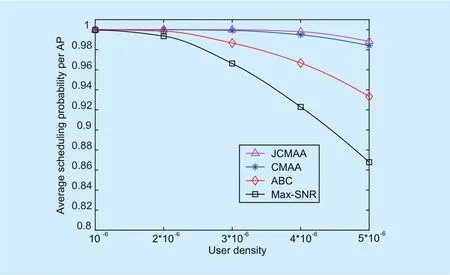
Fig. 7. Average scheduling probability per AP as a function of user density for different UARA strategies.
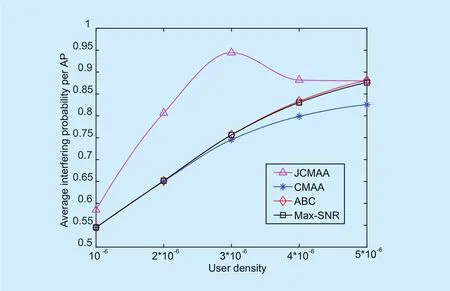
Fig. 8. Average interfering probability per AP as a function of user density for different UARA strategies.
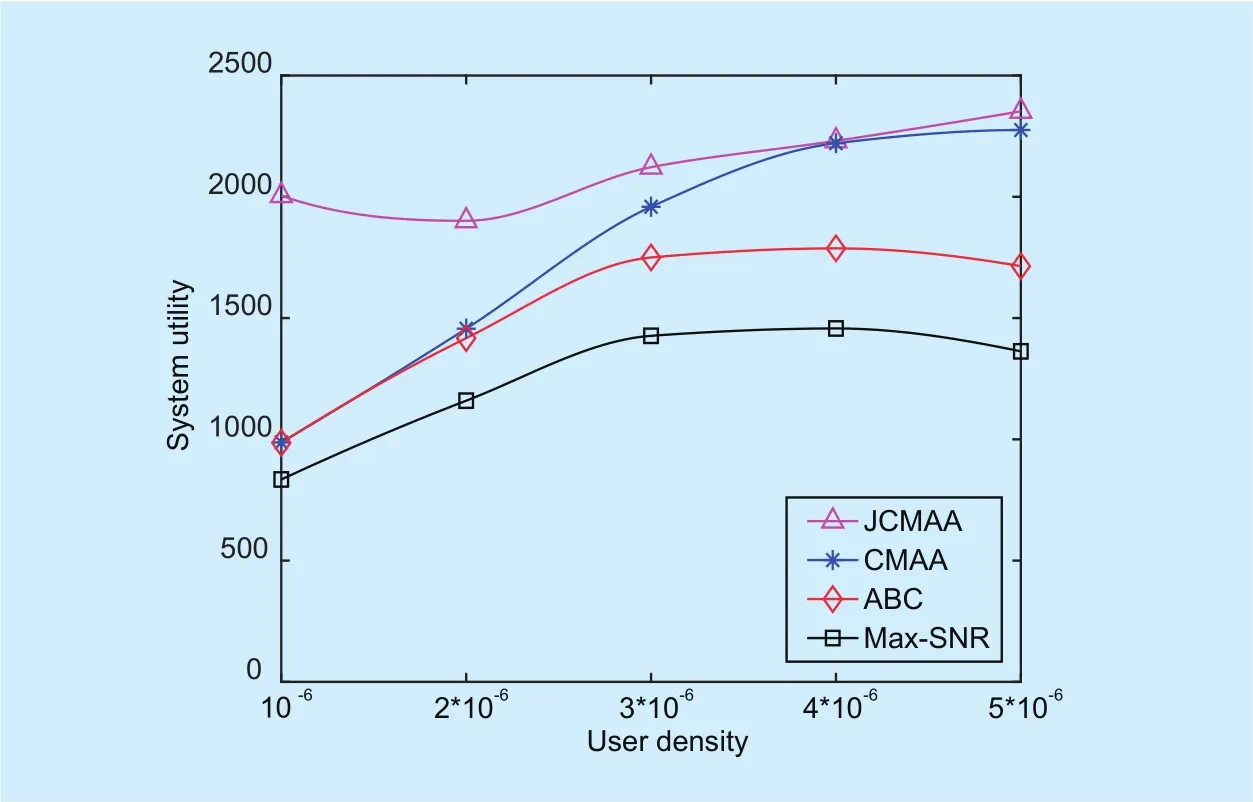
Fig. 9. System utility as a function of user density for different UARA strategies.
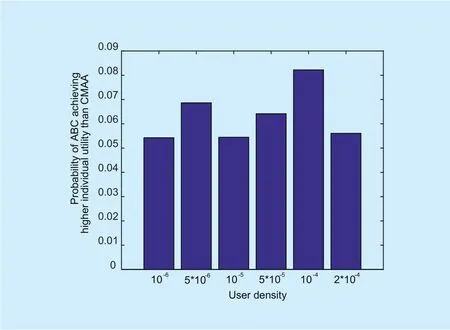
Fig. 10. Probability of ABC achieving higher individual utility than CMAA as a function of user density.
ACKNOWLEDGEMENTS
This work is supported by the National Natural Science Fund of China (Grant NO.61771065, Grant NO. 61571054 and Grant NO. 61631005), and Beijing Nova Program(NO. Z151100000315077).
References
[1] X. Zhang, R. Yu, Y. Zhang, et al., “Energy-Efficient Multimedia Transmissions through Base Station Cooperation over Heterogeneous Cellular Networks Exploiting User Behavior,”IEEE Wireless communication, vol. 21, no. 4, 2014, pp. 54-61.
[2] S. Wang, X. Zhang, Y. Zhang, et al., “A Survey on Mobile Edge Networks: Convergence of Computing, Caching and Communications,”IEEE Access, vol. 5, 2017, pp. 6757-6779.
[3] S. H. Chae, J. Hong and W. Choi, “Optimal Access in OFDMA Multi-RAT Cellular Networks:Can a Single RAT Be Better?,”IEEE Transactions on Wireless Communications, vol. 15, no. 7,2016, pp. 4778-4789.
[4] M. Peng, L. Vincent, W. Yu, et al., “Cloud Computing Based Radio Access Network,”China Communications, vol. 12, no. 11, 2015, pp. 1-2.
[5] R. Li, Z. Zhao, X. Zhou, et al., “Intelligent 5G:When Cellular Networks Meet Arti fi cial Intelligence,”IEEE Wireless Communications, vol. 24,no. 5, 2017, pp. 175-183.
[6] J. Wu, J. Liu, Z. Huang, et al., “Intelligent Network Selection for Data Offloading in 5G Multi-Radio Heterogeneous Networks,”China Communications, vol. 12, 2015, pp. 132-139.
[7] F. Guidolin, I. Pappalardo, A. Zanella et al., “Context-Aware Handover Policies in HetNets,”IEEE Transactions on Wireless Communications, vol.15, no. 3, 2016, pp. 1895-1906.
[8] M. E. Helou, M. Ibrahim, S. Lahoud, et al., “A Network-Assisted Approach for RAT Selection in Heterogeneous Cellular Networks,”IEEE Journal on Selected Areas in Communications, vol. 33,no. 6, 2015, pp. 1055-1067.
[9] L. Wang and G. S. Kuo, “Mathematical Modeling for Network Selection in Heterogeneous Wireless Networks–A Tutorial,”IEEE Communications Surveys & Tutorials, vol. 15, no. 1, 2013, pp.271-292.
[10] B. T. Fasil, A. Ahmad, V. Ingo, et al., “Evaluation of Adaptive Active Set Management for Multi-connectivity in Intra-frequency 5G Networks,”Proc. IEEE Wireless Communications and Networking Conference (WCNC), 2016, pp. 1-6.
[11] B. Sem, O. K. Aliye, C. Doru, et al., “Dynamic Path Selection in 5G Multi-RAT Wireless Networks,”Proc. IEEE INFOCOM, 2017, pp. 1-4.
[12] H. Kobayashi, E. Kameda and N. Shinomiya, “A Matching-Based Strategy for AP Selection in Sustainable Heterogeneous Wireless Networks,”Proc. IEEE Symposium on Computers and Communication (ISCC), 2016, pp. 103-107.
[13] M. H. Cheung, F. Hou, J. Huang, et al., “Congestion-Aware Distributed Network Selection for Integrated Cellular and Wi-Fi Networks,”IEEE Journal on Selected Areas in Communications,vol. 35, no. 6, 2017, pp. 1269-1281.
[14] G. Y, Y. Jiang, L. Xu et al., “Multi-Objective Energy-Efficient Resource Allocation for Multi-RAT Heterogeneous Networks,”IEEE Journal on Selected Areas in Communications, vol. 33, no. 10,2015, pp. 2118-2127.
[15] S. Singh, S. Yeh, N. Himayat et al., “Optimal Traffic Aggregation in Multi-RAT Heterogeneous Wireless Networks,”Proc. IEEE International Conference on Communications Workshops(ICC), 2016, pp. 626-631.
[16] S. Singh, M. Geraseminko, S. Yeh, et al., “Proportional Fair Traffic Splitting and Aggregation in Heterogeneous Wireless Networks,”IEEE Communications Letters, vol. 20, no. 5, 2016, pp.1010-1013.
[17] W. Lee, J. Koo, Y. Park et al., “Transfer Time, Energy, and Quota-Aware Multi-RAT Operation Scheme in Smartphone,”IEEE Transactions on Vehicular Technology, vol. 65, no. 1, 2016, pp.307-317.
[18] A. Alsohaily, E. S. Sousa, “On the Utilization of Multi-Mode User Equipment in Multi-Radio Access Technology Cellular Communication Systems,”IEEE Access, vol. 3, 2015, pp. 787-792.
[19] Y. Choi, H. Kim, S. Han, et al., “Joint Resource Allocation for Parallel Multi-Radio Access in Heterogeneous Wireless Networks,”IEEE Transactions on Wireless Communications, vol. 9, no.11, 2010, pp. 3324-3329.
[20] H. Dai, Y. Huang and L. Yang, “Game Theoretic Max-logit Learning Approaches for Joint Base Station Selection and Resource Allocation in Heterogeneous Networks,”IEEE Journal on Selected Areas in Communications, vol. 33, no. 6,2015, pp. 1068-1081.
[21] H. U. Sokun, R. H. Gohary and H. Yanikomeroglu, “A Novel Approach for QoS-Aware Joint User Association, Resource Block and Discrete Power Allocation in HetNets,”IEEE Transactions on Wireless Communications, vol. 16, no. 11, 2017,pp. 7603-7618.
[22] T. Z. Oo, N. H. Tran, W. Saad, et al., “Offl oading in HetNet: A Coordination of Interference Mitigation, User Association, and Resource Allocation,”IEEE Transactions on Mobile Computing,vol. 16, no. 8, 2016, pp. 2276-2291.
[23] J. Ghimire and C. Rosenberg, “Resource Allocation, Transmission Coordination and User Association in Heterogeneous Networks: A Flow-Based Uni fi ed Approach,”IEEE Transactions on Wireless Communications, vol. 12, no. 3, 2013,pp. 134-1351.
[24] Z. Yang, W. Xu, J. Shi, et al., “Association and Load Optimization With User Priorities in Load-Coupled Heterogeneous Networks,”IEEE Transactions on Wireless Communications, vol.17, no. 1, 2018, pp. 324-338.
[25] J. F. Hayes and T. V. J. G. Babu, “Modeling and Analysis of Telecommunications Networks,”Hoboken, New Jersey: John Wiley & Sons, 2004.
[26] F. Pantisano, M. Bennis, W. Saad, et al., “Matching with Externalities for Context-Aware User-Cell Association in Small Cell Network,”Proc.IEEE Global Communications Conference (GLOBECOM), 2013, pp. 4483-4488.
[27] Z. Han, D. Niyato, W. Saad, et al., “Game Theory in Wireless and Communication Networks,”New York, America: Cambridge University Press,2012.
- China Communications的其它文章
- Identity-Based Encryption with Keyword Search from Lattice Assumption
- Vortex Channel Modelling for the Radio Vortex System
- New Precoded Spatial-Multiplexing for an Erasure Event in Single Frequency Networks
- Microphone Array Speech Enhancement Based on Tensor Filtering Methods
- Uplink Grant-Free Pattern Division Multiple Access(GF-PDMA) for 5G Radio Access
- Smart Prediction for Seamless Mobility in F-HMIPv6 Based on Location Based Services

